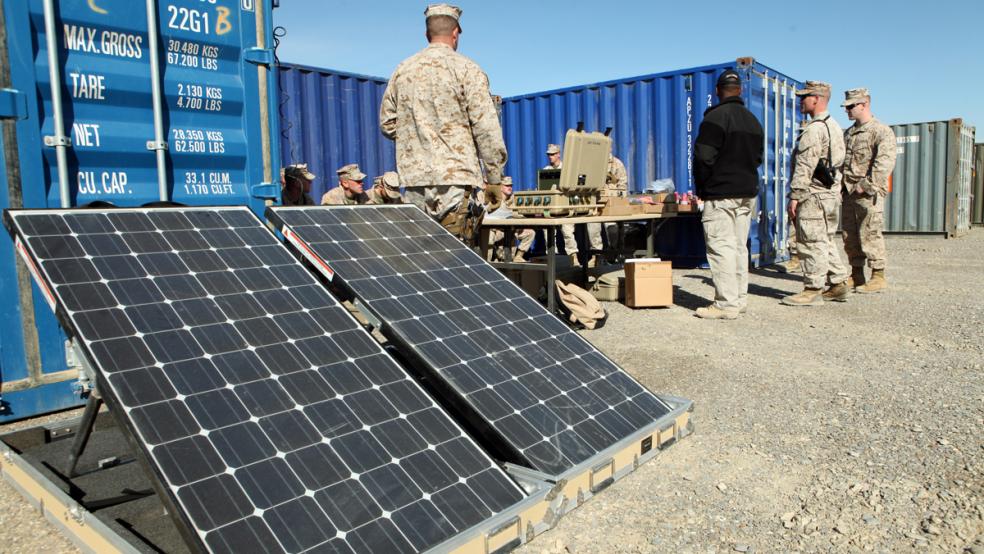The Pentagon wants to go green. Or at least a quarter of it expects to over the next decade.
On the day before Earth Day, the Army announced that one of its bases in Arizona will soon be home to the biggest solar power plant at a U.S. military installation. The renewable energy source is expected to provide 25 percent of the electricity used each year at Fort Huachuca.
That ambitious step isn’t an isolated incident. The Pentagon has pledged to source one-quarter of all base electricity from solar, wind, biomass and other renewable energy by 2025. And based on several reports analyzing progress on that front, the Defense Department is in a position to reach that milestone, even if it means playing a bit of catch-up.
Related: We’re One Step Closer to Robots on the Battlefield
In fiscal 2012, renewable energy accounted for 4 percent of all base electricity, short of the 5 percent benchmark set in a 2005 energy policy bill. Still, that year was an improvement over 2011, when green energy consumption accounted for 3.1 percent of all base electricity. Efforts began in 2008 to diversify energy sources, with a shift away from near-complete reliance on the U.S. electrical power grid.
“The department has several decades of experience with energy-efficiency projects and initiatives, but its renewable energy efforts are newer,” the authors of a Pew Charitable Trusts report wrote this year. Dedicated funding and program implementation demonstrate an “increased priority for renewable energy projects and indicate that new renewable energy projects implemented across the department will rise sharply in coming months and years.”
Related: America’s Ugly Win in Afghanistan
Renewable sources comprised 13 percent of U.S. electricity usage in 2013, according to government figures. Facility energy accounted for 20 percent of the Pentagon’s total energy bill in fiscal 2012, at a cost of $4 billion. That represents another incentive for finding less expensive sources, particularly with the automatic budget cuts known as sequestration scheduled to resume in October 2015.
Combat operations would not be required to use renewable energy.
The bulk of the renewable-energy savings may not be realized for years, whereas upfront investment with taxpayer dollars is already taking place. Over a three-year period ending last September, federal appropriations for defense-wide energy conservation projects more than doubled to almost $1 billion. Still, branches such as the Air Force and Navy have already cited savings in the hundreds of millions of dollars as a result of other conservation projects during the past 10 years.
Related: Ukrainian PM - We Can’t Stop Russia Alone
On-site production from wind turbines and solar panels also diminishes reliance on sourcing fossil fuels, which often have supply chains more vulnerable to delay or disruption.
“Energy is an installation priority,” said Maj. Gen. Robert Ashley, commanding general at Fort Huachuca. “The project will provide reliable access to electricity for daily operations and missions moving forward.”
Of the renewable-energy projects already underway or in the planning process, 68 percent will focus on solar power, followed by biomass at 16 percent. Geographical location plays a determining role, with solar being the predominant source in the southwest and biomass in the southeast.
Top Reads from The Fiscal Times:



